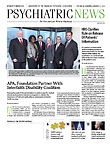Despite efforts at prevention, suicide rates in the United States have remained the same for the last half century. Clarifying approaches to research into suicide and its antecedents might ultimately lead to reductions in those rates, according to a new report.
The National Action Alliance for Suicide Prevention’s Research Prioritization Task Force issued a prioritized research agenda on February 5 by the public-private consortium led by Phillip Satow, chair of the board at the Jed Foundation, and Thomas Insel, M.D., director of the National Institute of Mental Health (NIMH).
About 38,000 Americans die by suicide every year, and 650,000 hospital visits are attributed to suicide attempts, noted the report.
“To reduce suicide, we need to know how to target our efforts: to be able to reliably identify who is at risk, how to reach them, and how to deter them from acting on suicidal thoughts,” said Insel in a statement.
The NIMH funds $44 million in suicide research annually, said the research agenda authors.
The document took about three years to produce, said Jane Pearson, Ph.D., chair of the Suicide Risk Consortium at NIMH and lead staffer for the research agenda. Task force members volunteered their time, and private groups and federal agencies provided administrative and meeting support.
A number of organizations and advocacy groups observed that prioritizing research into other diseases helped to advance the science in those areas, she said. At present, many gaps in the science of suicide exist: surveillance, causes, detection, treatment, and trajectories through age groups.
To begin the process of filling those gaps, the task force sought the views of 700 individuals, including scientists, funding bodies, clinicians, public health leaders, as well as survivors of suicide attempts and families of those who died by suicide.
The research agenda distilled their inquiry down to six key questions that its authors hope will guide research over the coming decade, with an initial goal of reducing suicides by 20 percent over the next five years:
Why do people become suicidal
How can we better or more optimally detect/predict risk?
What interventions prevent individuals from engaging in suicidal behavior?
What services are most effective for treating the suicidal person and preventing suicidal behavior?
What other types of interventions (outside health care settings) reduce suicide risk?
What new and existing research infrastructure is needed to reduce suicidal behavior?
“This document will draw attention and researchers to the topic and facilitate funding,” said Robert Ursano, M.D., a professor and chair of the Department of Psychiatry at the Uniformed Services University of the Health Sciences School of Medicine in Bethesda, Md. Ursano is co-principal investigator of the ongoing Army STARRS research on military suicides (Psychiatric News, March 7) but did not take part in the task force’s work.
The task force hopes to draw attention to measures already known to be effective, to test whether commonly used antisuicide programs are indeed effective, and to identify new research needed in less-studied areas.
Research methodology needs attention, as well. For example, alternative trial designs may be needed to overcome difficulties in randomization. Models based on accident research or behavioral economics may be useful. Standardizations of nomenclature, national patient registries, and expansion of the National Violent Death Reporting System (which now collects data in only 18 states) would improve surveillance, to cite just some of the issues raised in the research agenda.
“At NIMH, we have been trying to steer the field in this general direction to move interventions tested in clinical trials into clinical practice,” said Pearson. “We really have to compress the 17-year gap between research and clinical practice.”
“[S]uicide has proven stubbornly difficult to understand, to predict, and to prevent,” said Insel. “We believe the research agenda gives us a roadmap to save lives.” ■
“A Prioritized Research Agenda for Suicide Prevention: An Action Plan to Save Lives” can be accessed
here.
